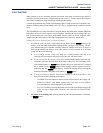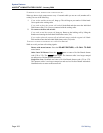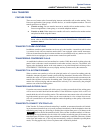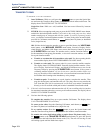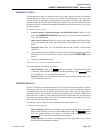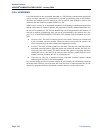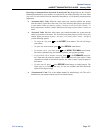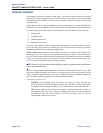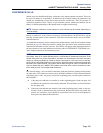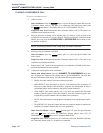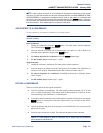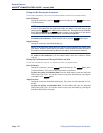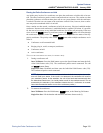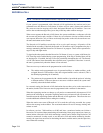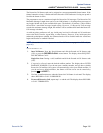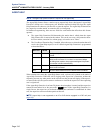
Page 209
System Features
AXXESS
®
ADMINISTRATOR’S GUIDE – January 2004
Conference Calls
CONFERENCE CALLS
Station users can establish multi-party conference calls without operator assistance. There can
be up to four parties in a conference. In addition to the initiating station, the conference can
include any combination of up to three intercom and/or outside calls. The CPU provides 12
conference channels (24 on a triple- or quad-cabinet system). Additional channels can be
added, via DSP programming on the Options card, to support conferencing.
NOTE: During a conference, some reduction in voice volume may be noticed, depending on
CO trunk quality.
During a conference, if any station user presses a dialpad button, the DTMF tones will be
heard by all other parties in the conference. This allows conference callers access to DTMF-
controlled devices.
An established conference can be transferred to another station, using the call transfer feature
described on page 203. While the transfer is taking place, the parties in the conference remain
connected to each other and may converse. The transfer will appear at the destination station in
the same manner as any other transferred call along with a CONFERENCE TFR FROM (user-
name) display and may be answered by the party.
NOTE: While this system is designed to be reasonably secure against CO trunk misuse by out-
side callers, there is no implied warranty that it is invulnerable to unauthorized intrusions. If the
central office does not provide supervision, and does not disconnect the call when one party
hangs up, making it possible for a caller to remain connected to a CO trunk circuit. If this hap-
pens, and the caller begins dialing, the call could be placed through the system and would then
be billed to the system's owner. The system cannot check this type of call for toll restriction and
may not register the call in SMDR. This problem could arise when a call is connected to a sta-
tion or when a call is in an unsupervised conference.
In a network setting, a user can build a conference with party members (stations and/or trunks)
on other nodes. The conference circuits used to build the conference will be allocated from the
originating party’s node. Any party, not just the originating party, can add a party member to
the conference.
• If the party who adds the new member is on the originating party’s node, the party will
be added to the conference circuit already allocated. This conference is still restricted to
the four party limit.
• If the party who adds the new member is not on the originating party’s node, a new con-
ference circuit is allocated from the second node. Because this allows more than four
parties in a conference, users should be warned that voice levels can be degraded as
more parties are added to the conference.



